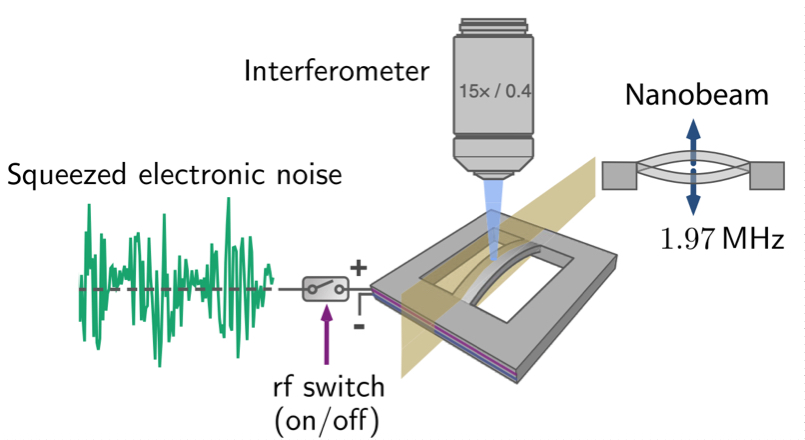Featured publication
J. Klaers, S. Faelt, A. Imamoglu, and E. Togan, “Squeezed thermal reservoirs as a resource for a nano-mechanical heat engine beyond the Carnot limit”, Physical Review X 7, 031044 (2017). link

Advances in micro- and nano-technology allow for testing concepts derived from classical thermodynamics in regimes where the underlying assumptions, such as the thermodynamic limit and thermal equilibrium, no longer hold. Single-particle heat machines provide an excellent platform to test theoretical advances in and our understanding of thermodynamics at the micro- and nano-scale.
In this project, a minimalist heat engine has been realized that takes advantage of a squeezed thermal resevoir to outperform conventional heat engines. The non-equilibrium nature of these reservoirs permit work extraction from a single reservoir and engine efficiencies unbounded by the standard Carnot limit. A major open question remains whether highly miniaturized heat engines will be able to use the extracted work to accomplish mesoscopic tasks as transporting particles or manipulating biological matter.
Featured publication
J. Klaers, “Landauer’s erasure principle in a squeezed thermal memory”, Physical Review Letter 122, 040602 (2019). link
Squeezed thermal reservoirs may naturally arise in pulse-driven system such as digital electronics. In a CPU, these states can be exploited to reduce the minimum required energy to perform computations (Landauer limit). A future computer might reduce heat production by timing operations to match naturally occurring temperature swings within the device.
See the press coverage of our work on the Landauer limit in a squeezed thermal memory:
Focus story by Michael Schirber at physics.aps.org.
Story by Alex Petrov at physicsworld.com.
Newspaper article by George van Hal in de Volkskrant (in Dutch).
Newspaper article by Dorine Schenk in NRC (in Dutch).